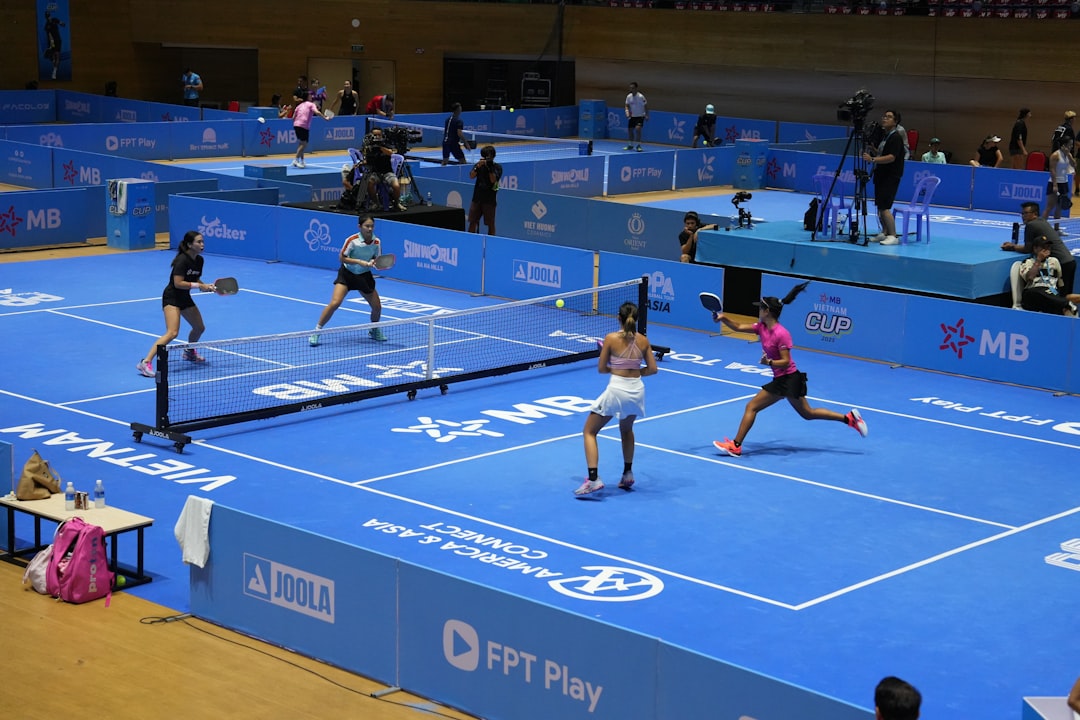Table tennis, widely regarded for its fast-paced intensity and fine-tuned skill, has grown from humble parlor game beginnings to a globally celebrated competitive sport. In discussions about international competitions, one key question often arises: Is table tennis an Olympic sport? This article provides a comprehensive look at table tennis within the context of the Olympic Games, its history, current status, and what it takes for a sport to gain such distinction.
TL;DR (Too Long; Didn’t Read)
Yes, table tennis is an Olympic sport. It was officially added to the Olympic program in 1988 and has since become one of the most viewed and competitive sports, especially popular in Asia. Since its debut, the sport has evolved significantly in format and popularity. This article explores everything from its Olympic history to its modern-day standing.
Brief History of Table Tennis
Table tennis originated in the late 19th century in England, initially played as a leisure activity among upper-class Victorians. Originally called “ping pong,” it went through various developments before becoming officially recognized as a competitive sport. The International Table Tennis Federation (ITTF) was established in 1926, further standardizing the sport’s rules and creating a global structure for international competition.
When Did Table Tennis Become an Olympic Sport?
Table tennis officially became an Olympic sport at the 1988 Summer Olympics in Seoul, South Korea. Its inclusion was the result of decades of international play and growing popularity, especially in countries across Asia and Europe. The International Olympic Committee (IOC) recognized both the sport’s global appeal and its structured governance under the ITTF.
Initially, the Olympic program included two events for both men and women:
- Singles
- Doubles
However, this format evolved over time. For instance, the doubles events were replaced by team events starting from the 2008 Beijing Olympics, a move aimed at better showcasing country-wide strength and reducing redundancies in gameplay styles.
Why Is Table Tennis an Olympic Sport?
The inclusion of table tennis in the Olympic Games followed a few critical benchmarks. Here’s a breakdown of why it earned a place:
- Global Reach: With more than 220 national associations under the ITTF, the sport demonstrates global appeal.
- Structured Rules: Governed by the ITTF, table tennis follows standardized, enforceable rules suitable for Olympic competition.
- Competitive Integrity: Regular international competitions such as World Championships and World Cups provide ongoing athlete development and ranking systems.
- Viewership and Fanbase: Its high-speed dynamics and technical finesse attract millions of viewers, particularly in Asia where it is considered a national sport in countries like China.

Olympic Table Tennis Format and Rules
Currently, Olympic table tennis includes the following events:
- Singles – Men and Women
- Team Event – Men and Women
- Mixed Doubles – Introduced in the Tokyo 2020 Games
Matches are played in a best-of-seven games format, with each game going to 11 points. Players must win by at least two points. The matches are governed by highly specific rules regarding serve, equipment standards, and player conduct, in line with ITTF regulations.
Top Performing Countries
Since its introduction to the Olympics, China has dominated the sport. Chinese athletes have taken the majority of gold medals and often sweep the podium. Other countries that have shown strong performance include:
- Germany
- Japan
- South Korea
- Sweden
Yet, despite China’s dominance, other nations continue to improve and challenge the traditional strongholds, making the sport increasingly competitive and dynamic at each Olympic Games.
Significance of Inclusion in the Olympics
The elevation of any sport to Olympic status lends it prestige, opens avenues for funding, and increases its international visibility. For table tennis, Olympic inclusion has:
- Increased youth participation around the world
- Boosted sponsorships and media exposure
- Encouraged standardization of facilities and coaching
This global recognition has particularly benefited developing nations, giving them access to international competition and professional development in the sport.
The Role of ITTF in the Olympics
The International Table Tennis Federation (ITTF) plays a central role in managing the Olympic table tennis events. It works alongside the IOC to ensure strict adherence to standardized rules and oversees athlete qualification through global rankings and dedicated Olympic qualification tournaments.
In the lead-up to the Olympics, the ITTF organizes the world qualification events and Continental qualification tournaments, which account for a majority of the athlete selection process.
Challenges and Controversies
No international sport is free from its share of controversies, and table tennis is no exception. Some ongoing challenges include:
- Technical dominance vs. entertainment: Tactical and defensive gameplay can sometimes lead to matches that are less engaging for casual viewers.
- Equipment regulation: Technological advances in paddles and balls need constant monitoring to maintain fairness.
- Country quotas: The limitation on how many athletes each country can send, currently a maximum of two per singles event, is designed to prevent complete domination by one nation (namely, China), but remains a topic of debate.

Despite these concerns, the sport’s regulatory bodies have consistently adapted rules and formats to maintain fairness and spectator interest, such as introducing a mixed doubles event to highlight diversity and gender equality.
Future of Table Tennis in the Olympics
Table tennis continues to evolve in line with modern broadcasting and audience engagement strategies. Innovations such as:
- Advanced camera angles
- Instant replay and AI-assisted analytics
- Interactive viewership on digital platforms
are helping bring a new generation of fans into the fold. Moreover, the introduction of mixed doubles at the Tokyo 2020 Olympics was seen as a progressive step toward gender inclusivity and broader global participation.
Conclusion
So, is table tennis an Olympic sport? Absolutely—its status has not only been affirmed by its continued presence since 1988, but also by growing global viewership, evolving formats, and rising competitiveness across continents. Governed by the ITTF, the sport is backed by a solid structure that ensures fair play, international representation, and continuing innovation.
Whether you’re a passionate player or a curious fan, understanding the sport’s Olympic journey deepens appreciation for what many regard as one of the most dynamic, skill-intense competitions in the world today.



